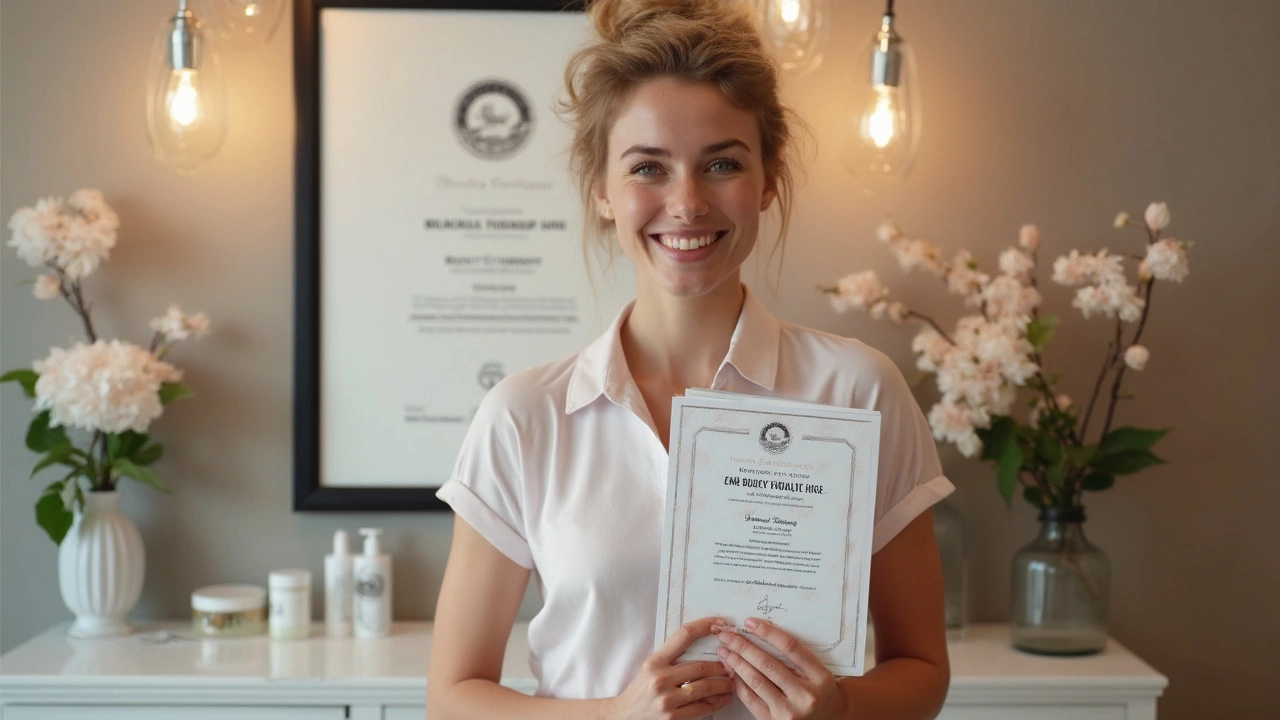Think about this—next time you’re at a spa, getting a facial or having your lashes done, the beauty therapist working on you probably didn’t just wing it after watching a couple of YouTube tutorials. There’s a surprising amount of science, technique, and yes, paperwork involved in making sure you walk out looking (and feeling) like a million bucks. So, what’s the actual path to getting hands-on with beauty therapy for a living?
Understanding Beauty Therapy: What It Covers and Why It’s Not All Lipstick and Lotions
People sometimes treat beauty therapy like it’s just a fancy way of saying “makeup artist,” but man, it reaches way beyond foundation and mascara. Beauty therapists are literal experts in skin care, body treatments, nails, waxing, brows, and even certain holistic therapies. This is someone who can advise you on what exfoliator won’t torch your skin, explain how electrotherapy zaps breakouts, or convince your neglected cuticles to play nice. The field has more depth than most people guess at first glance.
Let’s be real: a beauty therapist has to stay sharp on science, hygiene, safety rules, and the psychology of making people comfortable in vulnerable moments. You need to mix empathy with technical skill—my dog Charlie probably gets more chill spa time at home than most people, but real experts make even first-timers feel at ease.
If you’re thinking about beauty therapy as a job, don’t expect the trail to be as simple as picking up a mascara wand and hoping for the best. While some countries may let you start with a basic high school diploma and in-house training, most places in 2025 want you to have recognized credentials—often a formal certification, diploma, or sometimes even a degree, depending on your goals. Skipping training could mean closed doors at top salons or the risk of accidentally using an acid peel on someone who needed micellar water. (Yeah, that’s more common than you think!)
Unlike a few decades ago when on-the-job learning was enough for most beauty roles, the industry now expects you to understand anatomy, product chemistry, health protocols, and client care. If you plan to work independently, insurance companies and licensing boards want proof you know your stuff, not just a talent for winged liner.

Necessary Qualifications: Certificates, Diplomas, and Degrees for Beauty Therapists
This is where it gets interesting. There isn’t just one “beauty therapy degree” that everyone has to chase, but there’s a clear ladder of qualifications—and it actually opens up a lot of choices. The most common starting point? A recognized certificate or diploma in beauty therapy. Different countries or states will have their preferred accreditations, so you need to zero in on where you plan to work and what the local rules say.
Let’s break it down:
- Certificates: Shorter programs (sometimes six months to a year) cover the basics—skin care, makeup, waxing, nails. Good for entry-level work or if you want a taster before diving into advanced studies.
- Diplomas: (Like the UK’s NVQ Level 2 & 3 or Australia’s Diploma of Beauty Therapy) These are the industry benchmarks. It takes a year or two, mixes theory with a ton of practical training, and qualifies you for most jobs in spas, salons, or on your own.
- Associate Degrees: Countries like Australia offer two-year associate degrees, layering business, advanced skin treatments, and client care on top of technical skills. If you want to manage a spa, this is a smart route.
- Bachelor’s Degrees: Rare in the beauty therapy sphere, but some universities (especially in Europe and Asia) offer bachelor degrees in areas like Dermal Science or Aesthetics. These open more doors for teaching, advanced cosmetic work, or clinical skincare.
Think about your goals. If you’re dreaming of luxe spas on cruise liners, top-end medical-beauty clinics, or running your own brand, investing in a diploma or even an associate degree helps you stand out—and earns better pay. Some employers won’t even consider you without a certified diploma.
Course topics usually include:
- Facial treatments & skin analysis
- Massage and body therapy
- Makeup and lash/brow enhancements
- Waxing and hair removal
- Nail technology
- Health, safety, and infection control
- Customer care and business operations
- Advanced electives like microdermabrasion, peels, or electrotherapy (often available in higher-level diplomas or degrees)
It’s worth asking around: reputable schools will be accredited by recognized bodies—like CIDESCO, VTCT, or ITEC internationally, or state licensing boards in North America. If a program isn’t accredited, your certificate may not count for much in the real world.
Quick fact: Some beauty therapists double up qualifications, adding courses in medical aesthetics, cosmetic tattooing, or holistic therapies. That means more flexibility—and more money in the long run.

Extra Tips, Licensing Tricks, and How to Actually Get Hired as a Beauty Therapist
Getting the right beauty therapy degree or diploma is only half the story. Real talk? Most jobs go to people who already have some experience, mad people skills, and a clear focus on what makes them different. Here’s how to stand out.
- Portfolio power: Start snapping before-and-after pics (with permission!) of your work during your course. Build an Instagram or website with your specialties—lashes, makeup, brows, whatever. Employers are way more into real visual evidence than just reading a resume.
- Internships and part-time gigs: Many training programs include salon placements. If not, chase down local salons or spas and offer to assist. The connections you make as a student are gold later.
- Licensing and insurance: Every country—heck, every city—has its own rules. North America typically requires state exams and ongoing education hours. Australia, the UK, and New Zealand lean more on recognized diplomas and hygiene certifications. Insurance is almost always non-negotiable if you go freelance or open a salon.
- Stay updated: Beauty trends don’t wait. Hybrid brows, LED therapy, laser facials—they pop up fast. Following industry news, joining associations, or picking up short upskilling courses can keep you competitive and client-ready.
- Don’t skip soft skills: People skills are as crucial as technical ones. Can you listen well, handle tricky clients, keep cool if a facial goes wrong? The therapists who rocket ahead usually have a way with customers—not just a steady hand for eyeliner.
One thing a lot of people don’t realize is that beauty therapy can be a launching point for things way beyond the spa floor. Plenty of therapists go on to become product trainers, brand reps, skincare educators, or even start their own labels. Every new certificate or higher-level degree opens another door.
Here’s a fun tidbit: According to CIDESCO, one of the global leaders in beauty therapy education, the graduates with the best career trajectories usually combined at least one diploma with real salon experience during school. Often, their first jobs came from contacts they made during their program—not just what was on their certificate. Plus, with salons and clinics always rolling out new tech (LED masks, laser machines, even AI skin analysis), therapists who keep learning stay lightyears ahead.
The real bottom line? There’s no one-size-fits-all “best” beauty therapy qualification—it’s about matching your ambitions to the training, hustling for that crucial hands-on experience, and constantly leveling up your skills. If you can handle the mix of science, style, and a little bit of hustle, this gig offers stability, people connections, creativity, and the option to grow way beyond what people think when they first hear ‘beauty therapist.’ Plus, you’ll never look at a facial or brow wax the same way again!





Write a comment